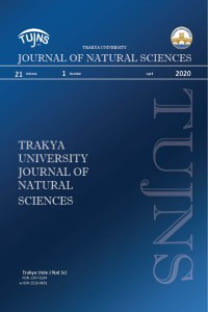MISLEADING METRICS: PREDATORY TRADE EXPANDS
MISLEADING METRICS: PREDATORY TRADE EXPANDS
misleading metrics, predatory publishing fake impact factor,
___
- 1. Anonymous. 2023. Misleading Metrics. https://beallslist.net/misleading-metrics/ (Date accessed: 21.09.2023).
- 2. Beall, J. 2012. Predatory publishers are corrupting open access. Nature, 489: 179. https://doi.org/10.1038/489179a
- 3. Butler, D. 2013. Sham journals scam authors. Nature, 495: 421-422. https://doi.org/10.1038/495421a
- 4. Dadkhah, M., Borchardt, G., Lagzian, M. & Bianciardi, G. 2017. Academic journals plagued by bogus impact factors. Publishing Research Quarterly, 33: 183-187. https://doi.org/10.1007/s12109-017-9509-4
- 5. Dadkhah, M., Rahimnia, F. & Memon, A.R. 2022. How Frequent is the Use of Misleading Metrics? A Case Study of Business Journals. The Serials Librarian, 83: 197-204. https://doi.org/10.1080/0361526X.2022.2145414
- 6. EZB. (2018). About the EZB. Retrieved from http://rzblx1.uniregensburg.de/ezeit/about.phtml?bibid=AAAAA&colors=7&lang=en (Date accessed: 21.09.2023).
- 7. Gutierrez, F.R.S., Beall, J. & Forero, D.A. 2015. Spurious alternative impact factors: The scale of the problem from an academic perspective. BioEssays, 37: 474-476. https://doi.org/10.1002/bies.201500011
- 8. Jalalian, M. & Mahboobi, H. 2013. New corruption detected: Bogus impact factors compiled by fake organizations. Electronic Physician Journal, 5: 685-686. https://doi.org/10.14661/2013.685-686
- 9. Koçak, Z. 2022. The Recent Decisions of the Turkish Council of Higher Education on Predatory Journals. Balkan Medical Journal, 39: 81-82. https://doi.org/10.4274/balkanmedj.galenos.2022.21022022
- 10. Linacre, S. 2021. Mountain to climb. https://blog.cabells.com/2021/09/01/mountain-to-climb/ (Date accessed: 21.09.2023).
- 11. Shamseer, L., Moher, D., Maduekwe, O., Turner, L., Barbour, V., Burch, R., Clark, J., Galipeau, J., Roberts, J. & Shea B.J. 2017. Potential predatory and legitimate biomedical journals: can you tell the difference? A cross-sectional comparison. BMC Medicine 15(1): 28. https://doi.org/10.1186/s12916-017-0785-9
- 12. Xia, J. & Smith, M.P. 2018. Alternative journal impact factors in open access publishing. Learned Publishing, 31: 403-411. https://doi.org/10.1002/leap.1200
- ISSN: 2147-0294
- Yayın Aralığı: 2
- Başlangıç: 2000
- Yayıncı: Trakya Üniversitesi yayınevi
Sergii ROGOVSKYI, Liubov ISHCHUK, Halyna ISHCHUK
IDENTIFICATION OF LENS CULTIVARS IN MARKET BY MOLECULAR TOOLS: DNA BARCODING AND SSRs
Metin Burak TATLISES, Semra HASANCEBİ
Vladyslav PARAKHNENKO, Volodimir VİTENKO, Inna DİDENKO, Sergiy KOVAL, Vitalii CHERNYSH
Gamze GÖGER, Esma ÇEVİK, Alişan VARNALI, Ömer Koray YAYLACI, Medine Münevver UMA, Gülmira ÖZEK
Delastria, A NEW GENUS OF HYPOGEOUS FUNGI RECORD FOR THE TURKISH MYCOBIOTA
Ilgaz AKATA, İsmail ŞEN, Ergin SAHİN, Bekir ÇÖL, Emre KESKİN
AN EVALUATION OF SYLVIIDAE SPECIES IN THE TRANSPORT OF POLLEN: A CASE STUDY OF İSTANBUL
Nurgül KARLIOĞLU KILIÇ, Ergün BACAK, Rüya YILMAZ DAĞDEVİREN, Arif Cemal ÖZSEMİR, Elif Ayşe YILDIRIM, Umut GÜNGÖR, Vedat BEŞKARDEŞ
Çağla ERSÖZ, Deniz ALTUN ÇOLAK
ISOLATION OF A NOVEL ANTIMICROBIAL POLYPEPTIDE FROM AN Aspergillus niger ISOLATE
